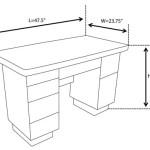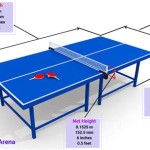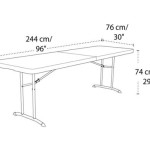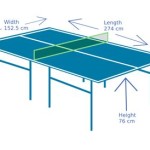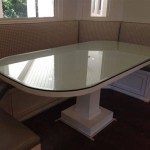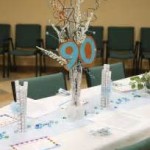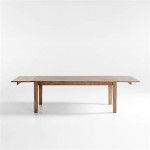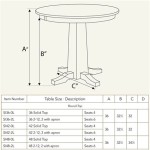The Allure and Functionality of Gas Fire Pit Tables
Gas fire pit tables have become increasingly popular outdoor living features, offering a seamless blend of aesthetic appeal and practical functionality. These tables provide not only warmth and ambient lighting but also a convenient surface for dining and entertaining. Their versatility, ease of use, and inherent safety features contribute to their widespread adoption in residential and commercial settings.
Unlike traditional wood-burning fire pits, gas fire pit tables eliminate the need for sourcing, storing, and managing firewood. They also negate the production of smoke, ash, and embers, making them a cleaner and more environmentally considerate option. The consistent and adjustable flame allows for precise temperature control, enhancing the overall experience and catering to varying weather conditions and personal preferences.
The construction of a gas fire pit table typically involves a durable frame, often made of materials like aluminum, steel, or concrete. The frame houses a burner assembly connected to a gas source, either a propane tank or a natural gas line. The burner is usually concealed beneath decorative elements such as fire glass, lava rock, or ceramic logs, creating a visually appealing and naturalistic fire display. A control panel, often discreetly integrated into the table's design, allows for easy ignition and flame height adjustment.
Choosing the right gas fire pit table requires careful consideration of several factors, including size, shape, materials, heat output, and aesthetic style. The intended use case, the available space, and the overall design of the outdoor area should guide the selection process. A well-chosen gas fire pit table can significantly enhance the ambiance and functionality of any outdoor space, providing a focal point for gatherings and relaxation.
Fuel Source Considerations: Propane vs. Natural Gas
One of the primary decisions to make when selecting a gas fire pit table is the choice between propane and natural gas as the fuel source. Each option offers distinct advantages and disadvantages, which should be carefully weighed based on individual needs and circumstances. Propane fire pit tables utilize a portable propane tank, typically concealed within the table's base or stored nearby. This provides flexibility in terms of placement, as the table is not tethered to a fixed gas line. Propane is also readily available and relatively easy to refill or exchange.
However, propane tanks require periodic refilling, which can be inconvenient and incur ongoing costs. The size of the propane tank also limits the burn time, necessitating more frequent refills for extended use. Furthermore, propane tanks can be visually unappealing and require careful storage to ensure safety.
Natural gas fire pit tables, on the other hand, connect directly to a home's existing natural gas line. This eliminates the need for refueling and provides a continuous and reliable fuel supply. Natural gas is often a more cost-effective fuel source than propane, particularly for frequent users. The absence of a bulky propane tank also contributes to a cleaner and more streamlined aesthetic.
However, natural gas fire pit tables require professional installation by a qualified gas fitter to ensure safe and compliant connection to the gas line. This involves additional upfront costs and may limit the placement options of the table, as it must be located within reach of the gas line. Furthermore, natural gas is generally less energy-dense than propane, which may result in slightly lower heat output.
The optimal fuel source depends on individual priorities and constraints. If portability and ease of installation are paramount, propane may be the preferred choice. If a continuous and cost-effective fuel supply is desired, and access to a natural gas line is readily available, natural gas may be the more suitable option. A thorough assessment of these factors will help to determine the best fuel source for a particular application.
Safety Features and Operational Considerations
Safety is paramount when operating any gas-powered appliance, including gas fire pit tables. Reputable manufacturers incorporate various safety features into their designs to mitigate potential risks and ensure safe operation. These features typically include a thermocouple or flame sensor, which automatically shuts off the gas supply if the flame is extinguished, preventing gas leaks. A pilot light provides a small, continuous flame that ignites the main burner when the gas is turned on. An adjustable regulator controls the gas pressure and flow, ensuring a consistent and safe flame height. A safety valve prevents over-pressurization and potential gas leaks.
Proper installation and maintenance are crucial for ensuring the safe operation of a gas fire pit table. It is essential to follow the manufacturer's instructions carefully during installation and to ensure that all connections are properly sealed. A qualified gas fitter should be engaged for natural gas installations to ensure compliance with local codes and regulations. Regular inspections should be conducted to check for gas leaks, damaged components, and debris buildup. The burner assembly should be cleaned periodically to prevent clogging and ensure proper flame distribution.
It is imperative to operate a gas fire pit table in a well-ventilated area, away from flammable materials such as trees, shrubs, and overhangs. A safe clearance zone should be maintained around the table to prevent accidental contact with the flame. Children and pets should be supervised closely when the fire pit table is in operation. It is never advisable to leave a gas fire pit table unattended, particularly when it is lit.
In the event of a gas leak, it is crucial to immediately shut off the gas supply at the source and to evacuate the area. Contact a qualified gas fitter or the local gas utility company to investigate the leak and make necessary repairs. Never attempt to operate a gas fire pit table if there is a suspected gas leak.
By adhering to these safety guidelines and operational considerations, users can enjoy the ambiance and warmth of a gas fire pit table with confidence and peace of mind.
Design and Material Choices: Aesthetics and Durability
Gas fire pit tables are available in a wide array of designs, materials, and finishes, allowing homeowners to seamlessly integrate them into their outdoor living spaces. The design should complement the existing architectural style and landscaping, creating a cohesive and visually appealing aesthetic. The choice of materials should consider both aesthetics and durability, ensuring that the fire pit table can withstand the elements and maintain its beauty for years to come.
Common materials used in the construction of gas fire pit tables include aluminum, steel, concrete, and stone. Aluminum is lightweight, rust-resistant, and relatively inexpensive, making it a popular choice for frames and bases. Steel is stronger and more durable than aluminum, but it is susceptible to rust if not properly treated. Concrete is a versatile material that can be molded into various shapes and finishes, providing a modern and industrial aesthetic. Stone is a natural and elegant material that adds a touch of sophistication to any outdoor space.
The burner area is typically filled with decorative elements such as fire glass, lava rock, or ceramic logs. Fire glass is a popular choice due to its vibrant colors and reflective properties, creating a dazzling fire display. Lava rock provides a more naturalistic look and retains heat well, radiating warmth even after the flame has been extinguished. Ceramic logs mimic the appearance of real wood logs, adding a rustic and traditional touch.
The shape of the gas fire pit table can also significantly impact its aesthetic appeal and functionality. Round tables are ideal for creating a sense of intimacy and encouraging conversation. Square or rectangular tables are well-suited for larger gatherings and provide ample surface area for dining and entertaining. Oval tables offer a compromise between these two shapes, providing both a sense of intimacy and sufficient surface area.
Ultimately, the design and material choices should reflect personal preferences and the overall style of the outdoor living space. By carefully considering these factors, homeowners can select a gas fire pit table that not only provides warmth and ambiance but also enhances the beauty and functionality of their outdoor environment.

Phi Villa 28 3 In X 24 8 50 000 Btu Square Metal Gas Fire Pit Table With Lid And Blue Glass Thd E02gs001 The Home Depot

Heatmaxx 42 In 60 000btu Fire Pit Propane Gas Table Rectangular Tabletop Srgf11666 The Home Depot

Anchorage 56 Mgo Gas Fire Table With Concrete Tank Holder Rectangular Gray Wood Christopher Knight Home Target

Baide Home 32 5 Round 50 000 Btu Gas Fire Pit Table For Outdoor Patio Garden Backyard Decking With Lid Glass Cover 10ft Propane Hose Com

Natural Gas Fire Table Pits Tables Pottery Barn

Heatmaxx 30 In 50 000 Btu Propane Gas Fire Pit Table Square Firepits With Glass For Outside Srgf11626 The Home Depot

Grammercy Gas Fire Pit Table Stainless Steel Burner 50000 Btu 30

Endless Summer Lp Gas Outdoor Fire Pit Rockford Chimney

Nuu Garden 30 In Square Outdoor Propane Gas Fire Pit Table With 50000 Btu Af006 01 The Home Depot

The Outdoor Greatroom Alcott Gas Fire Pit Table Alc 1224 Hvacdirect Com

